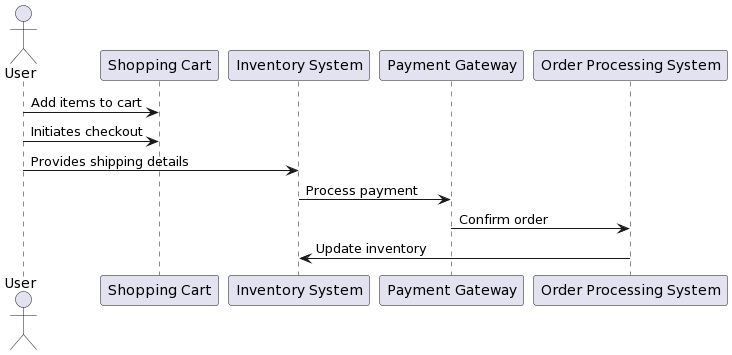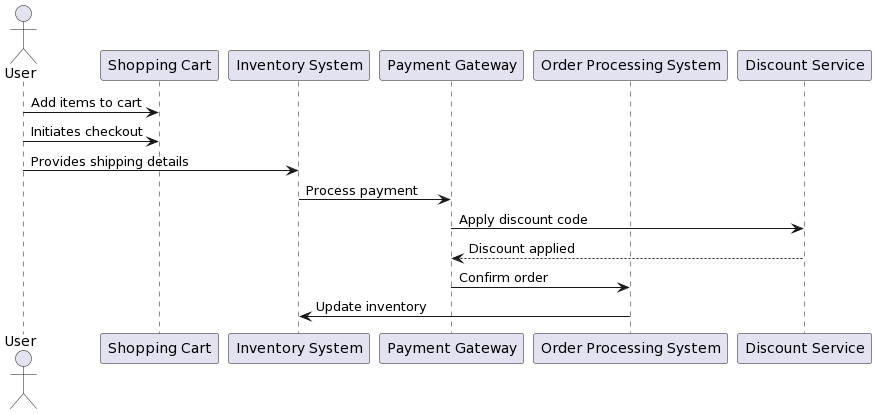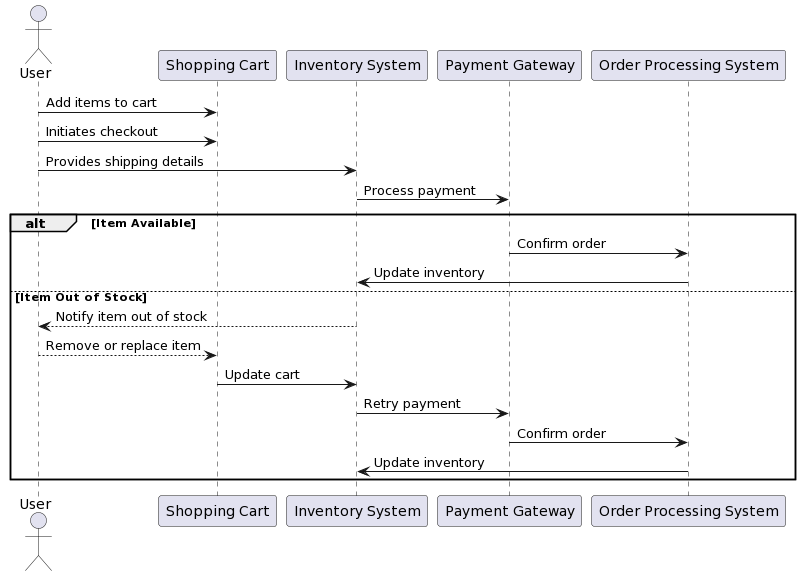Exploring Use Cases and Scenarios in Software Development
Introduction
In the intricate landscape of software development, where precision and clarity are paramount, the utilization of use cases and scenarios stands as a beacon guiding developers through the maze of requirements and functionalities. Let’s embark on a journey through the definitions, frameworks, and methodologies that make use cases and scenarios indispensable in the development process.
Understanding the Use Case
At its essence, a use case is a comprehensive collection of interactions between external actors and a system. It serves as a structured means of capturing and documenting the functional requirements of a system. In the Unified Modeling Language (UML), a standardized modeling language in software engineering, a use case is defined as “the specification of a sequence of actions, including variants, that a system (or entity) can perform, interacting with actors of the system.”
The Anatomy of a Use Case
Typically, each use case is a nuanced entity comprising a primary scenario, often referred to as the main course of events. This primary scenario outlines the typical and essential interactions between the system and its external actors under normal conditions. Additionally, a use case may encompass zero or more secondary scenarios, offering alternative courses of events that deviate from the primary path. These secondary scenarios enrich the overall understanding of the system’s behavior, accounting for variations, exceptions, or alternative user interactions.
Bridging the Gap Between Requirements and Development
In the realm of software development methodologies, the use case modeling emphasizes capturing user requirements through use cases, which are subsequently refined into scenarios. This iterative process ensures that the evolving needs and expectations of users are seamlessly integrated into the development lifecycle.
- A scenario, in the context of use cases, represents one specific path or flow through a use case. It narrates a sequence of events that unfold during a particular execution of the system. Scenarios provide a granular view of how the system behaves under different conditions, offering insights into the nuanced facets of its functionality.
The Sequence Diagram: Transforming Scenarios into Visual Blueprints
The journey from use cases to scenarios is completed with the modeling of scenarios using sequence diagrams. A sequence diagram is a visual representation that illustrates the interactions between various components of the system during the execution of a use case. It serves as a blueprint for system design, providing developers with a clear guide on how different elements of the system should interact to fulfill user requirements.
Use Case Modeling Case Study – From Use case to Scenarios and Sequence diagrams
Let’s delve into the essence of use cases and scenarios and explore their significance in the realm of software engineering.
1. Use Case Definition:
- Scenario: The team begins by identifying a fundamental use case: “User Places an Order.” This use case encapsulates the primary interaction between the user and the system, representing the core functionality of the online shopping platform.
2. Refining Use Case into Scenarios:
-
Scenario 1: Successful Order Placement:
- The user adds items to the cart, proceeds to checkout, provides shipping details, and confirms the order.
-
Scenario 2: Order with Discount Code:
- A variant where the user applies a discount code during checkout, impacting the final order total.
-
Scenario 3: Order with Out-of-Stock Items:
- Addressing the scenario where an item in the cart is out of stock, requiring user notification and decision-making.
3. Modeling Scenarios with Sequence Diagrams:
Each scenario is then translated into a sequence diagram, providing a visual representation of the interactions between different components of the system during the execution of the use case.
-
Sequence Diagram for Scenario 1: Successful Order Placement:
- Actors: User, Shopping Cart, Inventory System, Payment Gateway, Order Processing System.
- Steps: User adds items to the cart, initiates checkout, provides shipping details, payment is processed, order is confirmed, and the system updates inventory.

-
Sequence Diagram for Scenario 2: Order with Discount Code:
- Additional interactions with the Discount Service are depicted, showing how the discount code affects the order total.

-
Sequence Diagram for Scenario 3: Order with Out-of-Stock Items:
- In this scenario, the Inventory System communicates the unavailability of an item to the user, who then decides to remove or replace the item.

- In this scenario, the Inventory System communicates the unavailability of an item to the user, who then decides to remove or replace the item.
Purpose of the Process
-
Clear Communication:
- The use case provides a high-level overview, scenarios offer detailed paths, and sequence diagrams bring a visual clarity to the system interactions. This progression ensures that everyone involved, from developers to stakeholders, has a shared understanding of the system’s behavior.
-
Requirement Analysis:
- Breaking down the use case into scenarios allows for a more granular analysis of user requirements. This, in turn, aids in identifying potential challenges, edge cases, and dependencies.
-
System Design Guidance:
- Sequence diagrams serve as a blueprint for system design. They guide developers in understanding how different components of the system need to interact to fulfill user requirements.
Benefits of the Process
-
Accuracy and Precision:
- By refining a use case into scenarios and modeling them with sequence diagrams, the team ensures a more accurate and precise understanding of user interactions and system responses.
-
Test Case Generation:
- The sequence diagrams become a valuable resource for test case generation. Test scenarios can be derived directly from the interactions depicted in the diagrams, ensuring comprehensive testing coverage.
-
Iterative Development:
- The process of refining use cases and modeling scenarios aligns well with iterative development methodologies. It allows the team to adapt to evolving requirements and continuously refine the system design.
Conclusion
In the realm of software development, the use of Use Cases, Scenarios, and Sequence Diagrams emerges as a structured and indispensable approach to capturing, analyzing, and visualizing system functionalities. The journey begins with the definition of a Use Case, a comprehensive collection of interactions between external actors and a system. In the Unified Modeling Language (UML), a Use Case is specified as “the sequence of actions, including variants, that a system can perform, interacting with its actors.”
A Use Case typically comprises a primary scenario, representing the main course of events, and may include zero or more secondary scenarios, offering alternative paths to the primary scenario. The Rational Unified Process (RUP), a robust software development framework, emphasizes capturing user requirements as Use Cases, which are subsequently refined into Scenarios.
Scenarios, in turn, delve into one specific path or flow through a Use Case, providing a detailed sequence of events during a particular system execution. This refinement process aids in clear communication, meticulous requirement analysis, and serves as a foundation for iterative development methodologies.
The transition from Use Cases to Scenarios culminates in the modeling of these scenarios using Sequence Diagrams. These visual blueprints illustrate the interactions between different system components during the execution of a Use Case. The purpose of this process is multi-faceted:
-
Clear Communication:
- The structured progression ensures effective communication between technical teams and stakeholders, fostering a shared understanding of the system’s behavior.
-
Requirement Analysis:
- Breaking down Use Cases into Scenarios facilitates a granular analysis of user requirements, identifying potential challenges, edge cases, and dependencies.
-
System Design Guidance:
- Sequence Diagrams serve as blueprints for system design, offering visual guidance for developers on how different components should interact to fulfill user requirements.
-
Iterative Development:
- Integrated with methodologies like RUP, this process aligns seamlessly with iterative development practices, accommodating evolving requirements and allowing for continuous refinement.
In a nutshell, this meticulous journey from Use Cases to Scenarios and Sequence Diagrams provides a systematic and structured approach in software development. It ensures accuracy, precision, and adaptability, ultimately contributing to the successful development and deployment of robust, user-centric systems.

